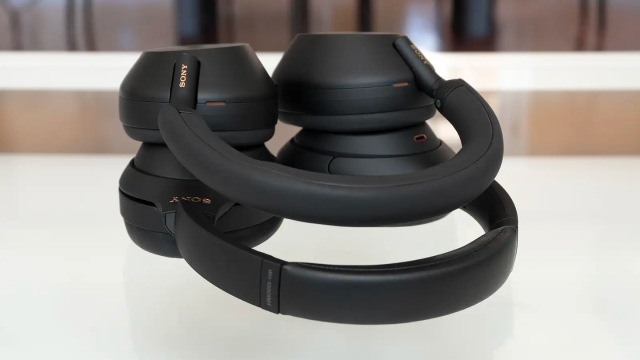If there’s one word that sums up Sony’s flagship wireless headphones year over year, it’s consistency. The WH-1000XM line has seen only subtle design updates since the original WH-1000XM1, but four iterations later, the new WH-1000XM5 bring some big changes. Longtime fans may not immediately fall in love with the redesign, but when it comes to what’s important: sound quality and ANC performance, Sony once again delivers a compelling reason to upgrade, or jump ship from the competition.
When the WH-1000XM2 were released back in 2017, we confidently declared that it was Sony, not Bose — the champion of travelling business types for years — who offered the best wireless noise-cancelling headphones. Sony securely held onto this crown with the WH-1000XM3 and the WH-1000XM4 after that, but last year, despite a significantly larger $899 price tag, we gave the nod to Apple’s AirPods Max. Put simply, the headphones’ use of nine microphones wowed us with noise-cancelling prowess. A year later, Sony is back with a vengeance, giving the new WH-1000XM5 a major facelift and pairing them with improved ANC that once again edges out the stiff competition.
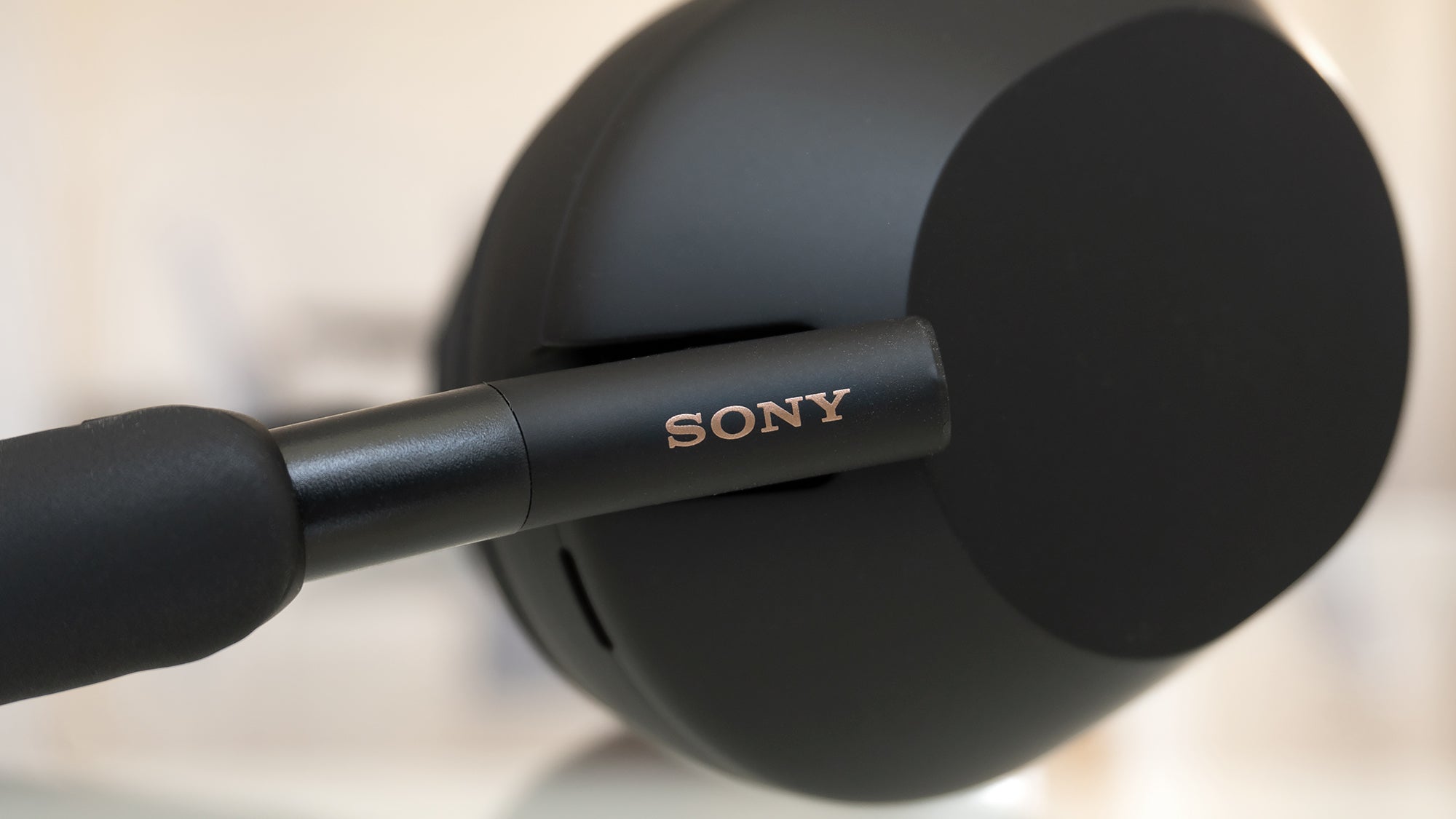
Sony WH-1000XM5
WHAT IS IT?
Sony's top-of-the-line wireless headphones that manage to step-up industry leading active noise cancellation once again.
LIKE
The best active noise cancellation you can buy, topping even the Apple AirPods Max.
DISLIKE
The headphones don't fold down as compact as previous generations, leaving you with a carrying case that will demand more space in your bag.
A Major Redesign…
An easy way to encourage consumers to upgrade to the latest version of a product is a flashy redesign, but to date that hasn’t been Sony’s approach to the WH-1000XM line. The WH-1000XM1 are hard to differentiate from the WH-1000XM4 unless you know what to look for, but that’s not a bad thing. The WH-1000XM headphones have always featured an incredibly comfortable design that almost makes the headphones feel like they disappear when placed on your head.

The new WH-1000XM5, by comparison, are now very easy to distinguish from past models, with a new streamlined design. The earcups look sleeker and various design features have been rounded off and simplified. If the WH-1000XM4 were created as a prop for the original Star Trek series, the new WH-1000XM5 feel like the same prop updated for the more modern Star Trek: The Next Generation.

The flat headband on the WH-1000XM4 is now more rounded on the WH-1000XM5, but with the same level of padding so it continues to feel incredibly comfortable on the head. The headband on the WH-1000XM4 would actually visibly split apart when making size adjustments for larger heads, and while I wouldn’t say it was ugly, the WH-1000XM5’s headband now seamlessly extends at the spot where the band connects to each earcup, and I’ll admit it looks a lot better.
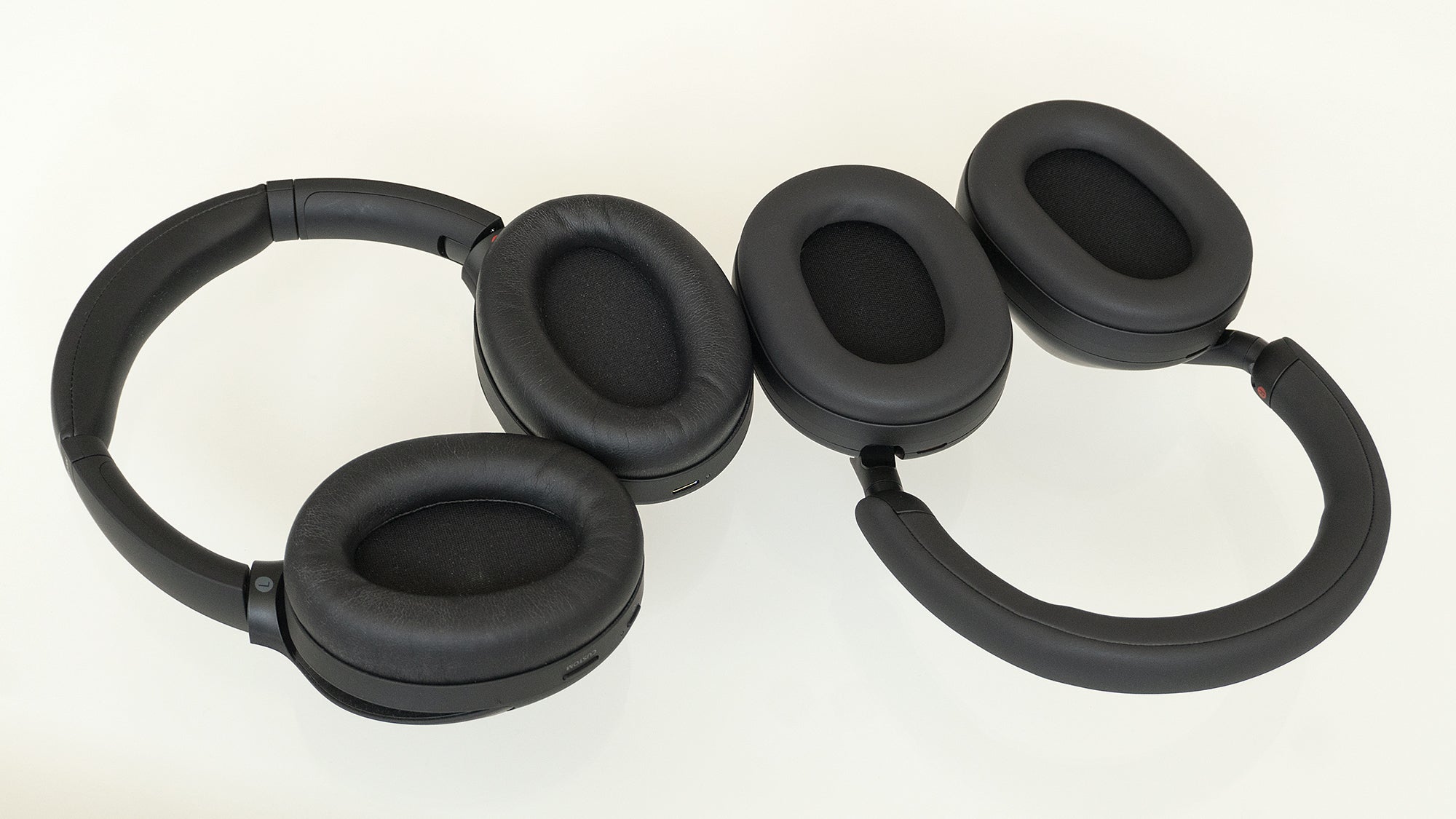
Sony has also increased the interior size of each earcup so it better sits on the head without rubbing against your ears, and is now using a new synthetic leather material and foam padding that remains incredibly soft. Despite additional and improved electronics inside, Sony has also managed to lighten the new WH-1000XM5. They weigh just 250 grams, compared to 254 grams with the previous generation WH-1000XM4.
I’m not going to pretend like I can feel the four gram difference between the two models, but Sony’s obsession with shaving down the weight of its gear is definitely noticeable when you compare it to the competition. The Apple AirPods Max weigh in at a hefty 384 grams by comparison, and taking them off after an hour’s use feels much different than removing the WH-1000XM5, which I’ll sometimes forget I’m actually wearing.
…With Some Minor Compromises
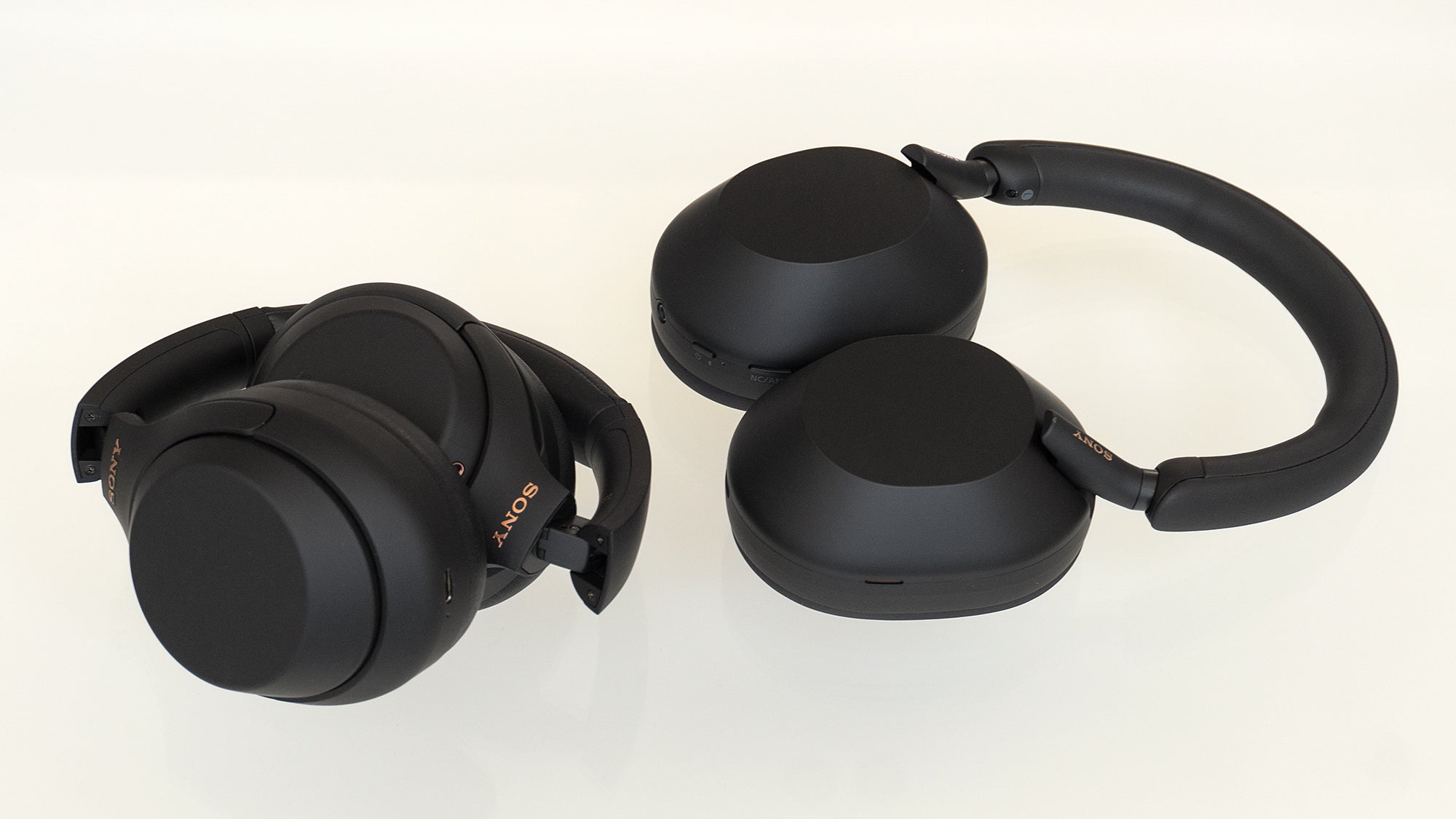
It’s not hard to draw comparisons between the design of the AirPods Max and the new WH-1000MX5, as Sony’s latest entry seems to borrow a few design cues from Cupertino. That’s not necessarily a bad thing, because Apple takes design very seriously and is very good at it. But my biggest complaint with the new WH-1000MX5 is that, like the AirPods Max, they no longer fold in on themselves.
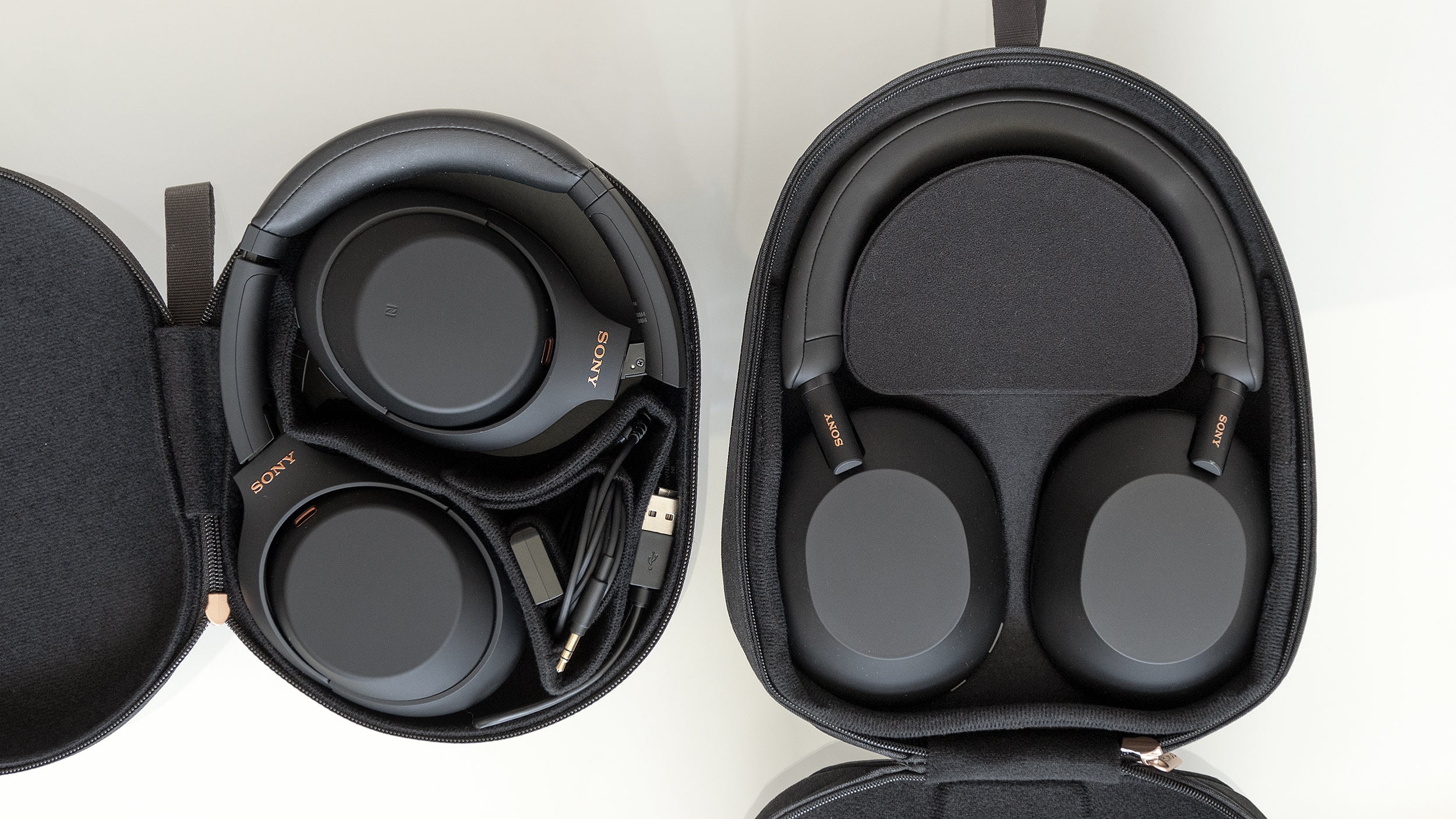
The earcups do rotate almost 180-degrees so that the WH-1000MX5 will be flatter when stowed away in their carrying case, but they now occupy a larger footprint, and as a result have a larger case that’s going to demand more space in backpack or carry-on.
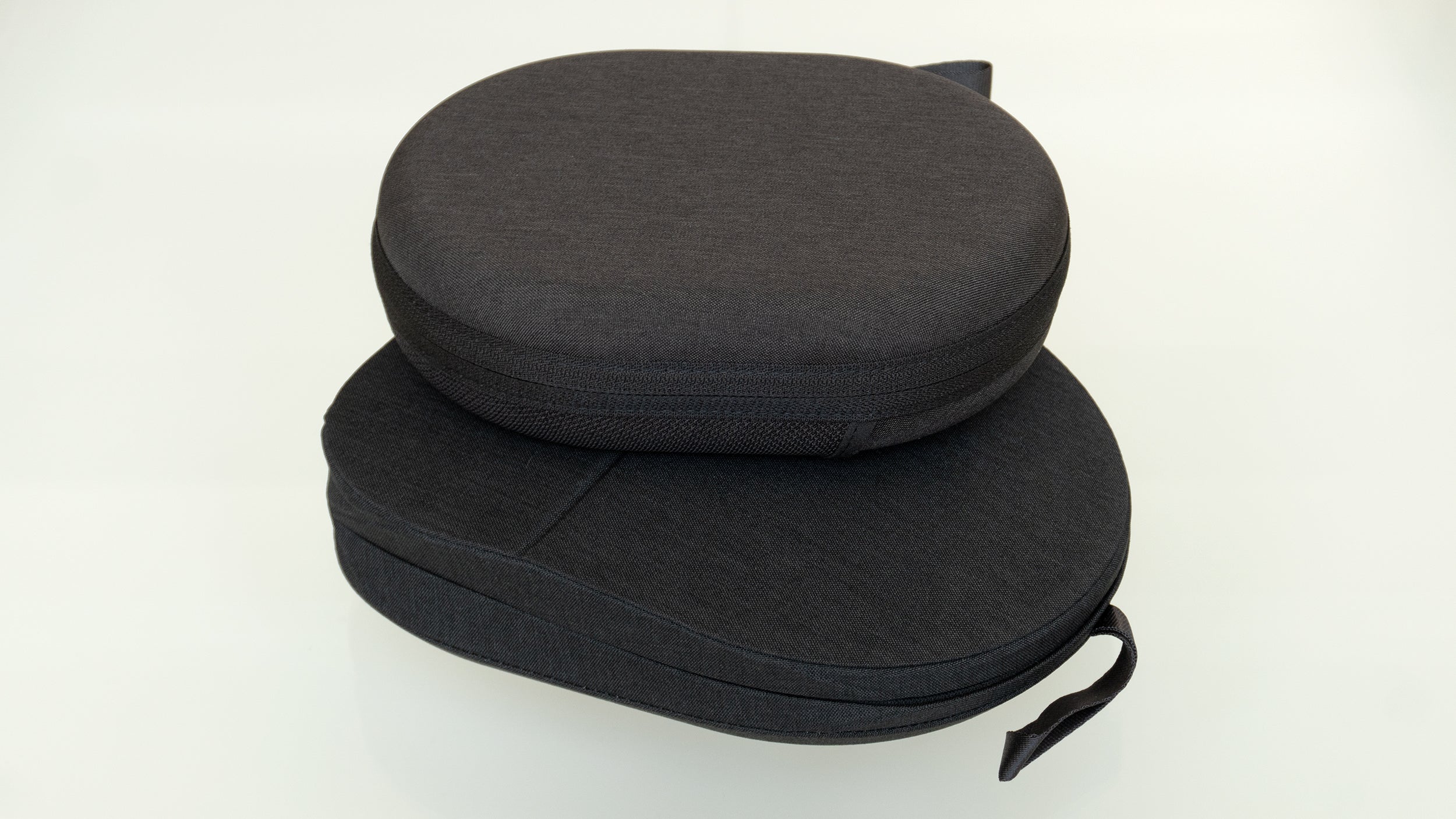
It’s not a dealbreaker by any stretch of the imagination, and to take the sting out of the WH-1000MX5’s larger carrying case, Sony has actually designed it to fold 40% thinner using origami-like pleats so it’s even easier to stash away when empty. But as someone not responsible enough to always use a protective case, who would often just cram the WH-1000XM4 into a bag with them all folded up, I will admit that I’m disappointed to see some headphone makers moving away from the folding design — even if I comes across as an old man yelling at a cloud.
Welcome to the ANC Microphone Arms Race
Next to the convenience of ditching cables, the other big reason for consumers to switch to a pair of over-ear wireless headphones is the excellent noise-cancellation they can deliver. In addition to physically blocking external noises from entering the ear, active noise-cancellation uses microphones to listen to sounds around the user and then generate additional sound waves inside that cancel them out. The more microphones you can dedicate to the task of listening to ambient sounds in all directions, the better the results will be, which is why larger over-ear headphones still outperform smaller wireless earbuds when it comes to ANC.
The WH-1000XM4 used four microphones, while the new WH-1000XM5, like the AirPods Max, now use eight in total. But Sony is taking things one step further with the WH-1000XM5 by using two dedicated processors to handle ANC instead of just one, with impressive results. I haven’t had the chance to actually take them on a flight, so I instead tested them using simulated in-cabin noises from various commercial airliners and other sounds pumped through my home theatre. It’s clear from my testing that the new WH-1000XM5 are not only a step up over the WH-1000XM4, but Apple’s AirPods Max as well.
ANC is typically most effective at cutting out lower frequencies, such as the roar of a plane’s engine, and while sounds of the simulated Boeing 777 still snuck in through the AirPods Max’s ANC, the WH-1000XM5’s eliminated nearly all of it, leaving me feeling vibrations in the chair I was sitting in, without actually hearing the rumble causing them. Despite the extra processing going on, Sony still promises 30 hours of battery life with the WH-1000XM5, the same as the WH-1000XM4, with just 10 minutes of charging needed for five hours of playback.
Equally Impressive Sound, Edged Out Only By Apple
Despite the physical design changes, Sony seems to have mostly taken the ‘if it ain’t broke, don’t fix it’ approach with the WH-1000XM5’s functionality. Like the WH-1000XM4, they feature a “Quick Attention” mode, where covering the right earcup with your hand turns down the volume while activating ambient sound boosting so you can quickly listen to something else. They’ve also got solid multi-device connectivity, and “Speak to Chat” where playback is automatically paused for a preset amount of time when the wearer starts talking, ideal for occasional conversations without having to remove the headphones completely.
As for sound quality, these are Sony’s flagship wireless headphones, and like past iterations, they simply sound fantastic. They come with the ability to switch between various equalization presets in the accompanying mobile app, or make your own custom adjustments to their sound profile until you’re satisfied with what’s hitting your ears. They also feature a new 30-millimetre driver unit, and as much as I love almost everything about these headphones, I do believe the Apple AirPods Max, with their 40-millimetre drivers, do slightly outperform the WH-1000XM5. They offer better separation between the highs and lows and manage to keep everything wonderfully crisp and clear even when the volume is cranked. But Apple’s headphones are also $US150 ($208) more expensive than Sony’s.
A Step Forward or Back?
Now that Sony is directly competing with Apple in this space, the company is clearly getting more aggressive when it comes to updating the WH-1000XM line, and it’s definitely succeeded in creating a pair of headphones that will woo consumers away from Apple.
The WH-1000XM5 are not only $350 cheaper than the AirPods Max while delivering a step-up in terms of ANC performance, they’re considerably lighter and more comfortable to wear for longer periods, and include a case that fully encloses and protects the headphones while they’re bouncing around inside a bag. Apple’s H1 chip remains a compelling reason to choose the AirPods Max for iPhone users, but Sony’s multi-device connectivity works incredibly well, and I genuinely think the overall package of the WH-1000XM5 now makes them the better choice.
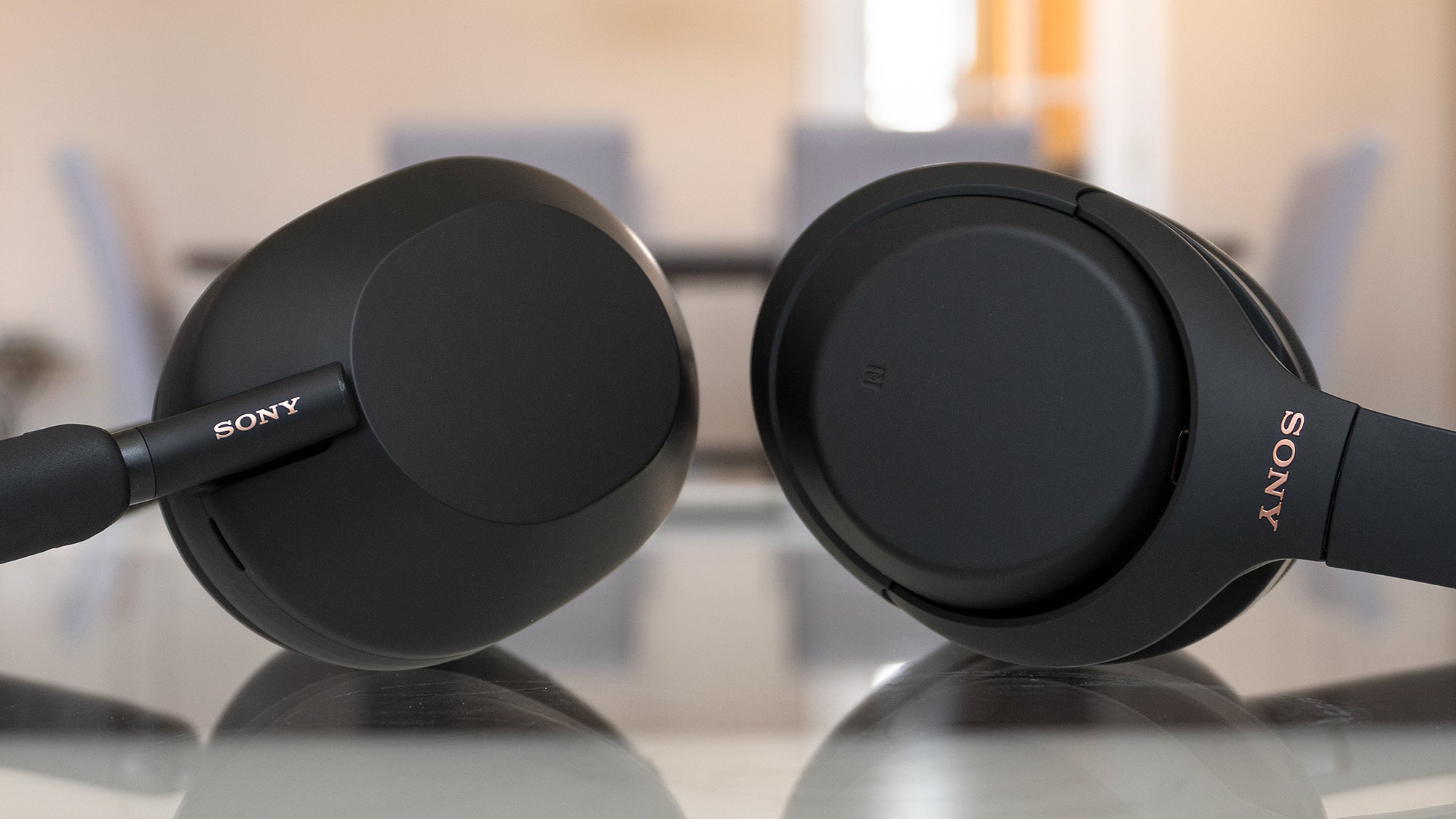
But if you’re already a happy user of the previous generation Sony WH-1000XM4, there’s not as much reason to upgrade. The new Sony WH-1000XM5 are now $155 more expensive, and as sleek as their new design is, the WH-1000XM4 still fold up into a much smaller package, making them easier to travel with. Existing fans of this line might want to sleep on this iteration and see what the inevitable WH-1000XM6 offer next year.
